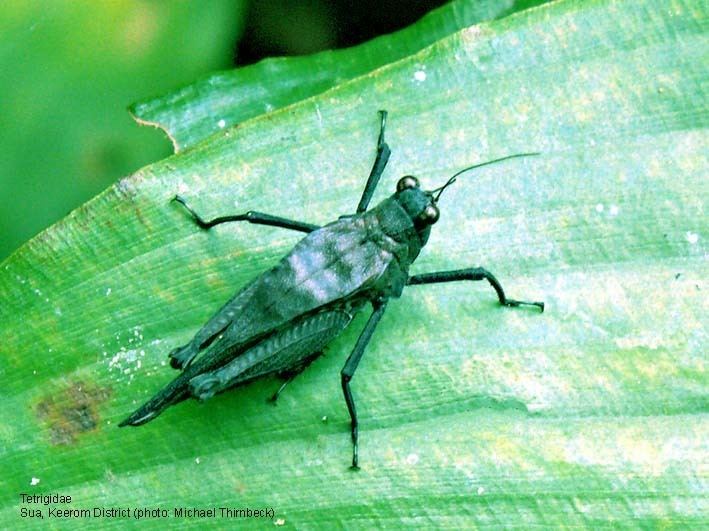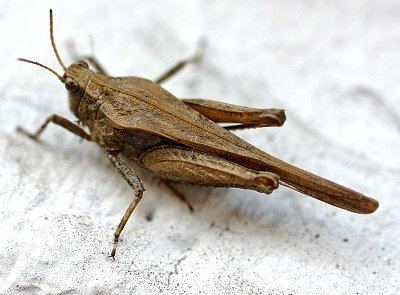Superfamily Tetrigoidea Higher classification Tetrigoidea | Phylum Arthropoda Suborder Caelifera Scientific name Tetrigidae Rank Family | |
Similar Orthoptera, Grasshopper, Tetrix, Insect, Tetrigoidea | ||
Tetrigidae
Tetrigidae is a family in the order Orthoptera, which also includes similar families such as crickets, grasshoppers, and katydids (US) or bushcrickets (UK). Species within the Tetrigidae are variously called grouse locusts, pygmy locusts, groundhoppers or pygmy grasshoppers.
Contents

Diagnostic characteristics

Pygmy locusts are less than 20 mm in length, and are recognizable by a long pronotum, that extends over the length of the abdomen, sometimes to the tip of the wings, and ends in a point. In other Orthoptera, the pronotum is short and covers neither the abdomen nor the wings. Tetrigidae are generally cryptic in coloration. Some species have enlarged pronota that mimic leaves, stones or twigs.
General biology
Roughly 1,600 species have been described in about 250 genera altogether.
In temperate regions, Tetrigidae are generally found along streams and ponds, where they feed on algae and diatoms. The North American species Paratettix aztecus and Paratettix mexicanus, for example, depend on aquatic primary production for between 80% and 100% of their diet. Riparian species are capable of swimming on the surface of the water, and readily leap into the water when alarmed Some species in the tribe Scelimenini are fully aquatic and capable of swimming underwater.
The highest biodiversity of Tetrigidae is found in tropical forests. Some tropical species are arboreal and live among mosses and lichens in tree buttresses or in the canopy, while others live on the forest floor.
Like other Orthoptera, Tetrigidae have a hemimetabolous development, in which eggs hatch into nymphs. Unlike other temperate Orthoptera, however, temperate Tetrigidae generally overwinter as adults.
Some subfamilies within the Tetrigidae, such as the Batrachideinae, are sometimes elevated to family rank besides the Tetrigidae.
Etymology
The name may be derived from Latin tetricus or taetricus, meaning harsh, sour, severe.
